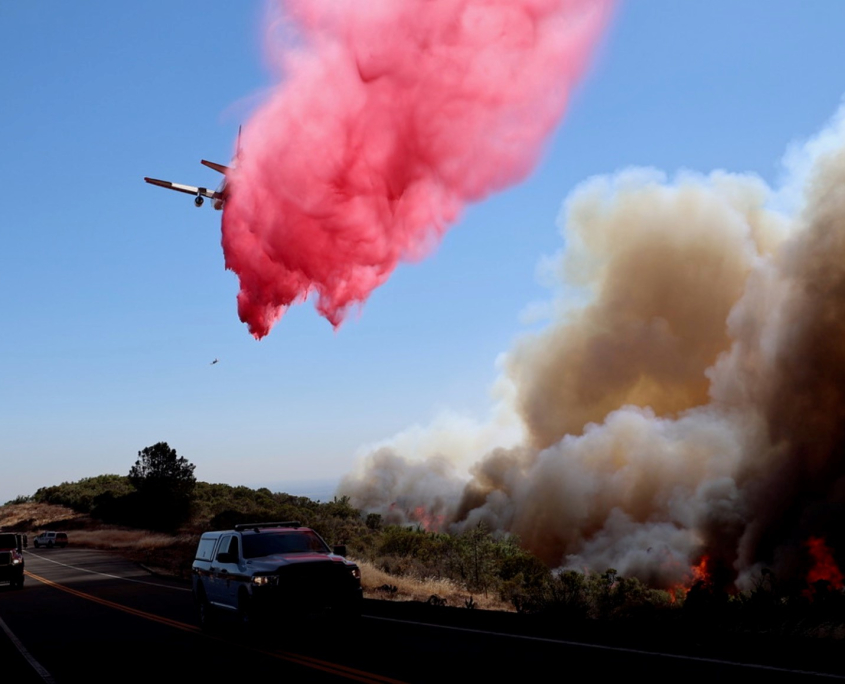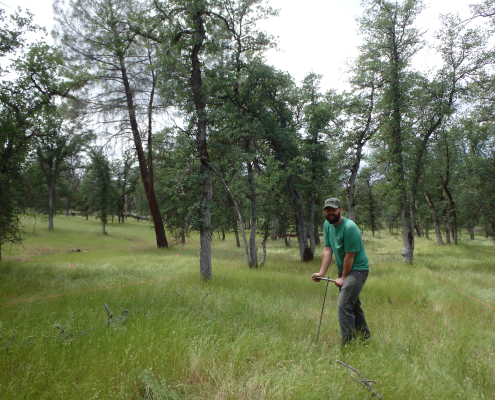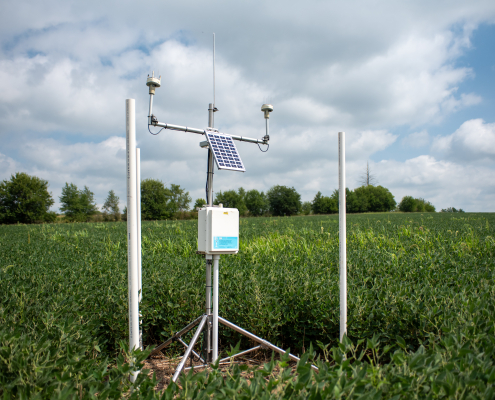Iowa Geological Survey’s Expertise Supports California Wildfire Prevention

Photo credit: Cal Fire
Matthew Streeter, a soil scientist with the Iowa Geological Survey, has recently expanded his expertise to the wildfire-prone landscapes of Palo Cedro, California.
While Streeter primarily focuses on soil health and water quality in Iowa, his knowledge was sought out by Perimeter Solutions, a private company specializing in fire-retardant products. He was invited to join an experimental team working on sampling and testing fire-retardant products for wildfire prevention. As climate change intensifies wildfires in California, strategies such as spraying fire retardant have emerged as potential mitigation tools. However, minimal research has been done to understand the long-term environmental impacts of applying these chemicals, encouraging little regulation and oversight from federal agencies.
The growing urgency for fire suppression often overshadows concerns about environmental impacts. Perimeter Solutions is addressing this gap by understanding how their fire retardant affects soil health and water quality.

Matthew Streeter collecting soil samples at test site.
“You can screw up soils pretty fast, but they take a long time to reapproach native levels,” says Streeter. The fire-retardant formula contains ammonium phosphate, similar to fertilizers like Monoammonium Phosphate (MAP) and Diammonium Phosphate (DAP) used in Iowa’s cornfields. Ironically, while these chemicals limit fire spread, they can also promote vegetation growth, increasing the amount of biomass—fuel for future fires. Streeter’s goal is to evaluate potential soil contamination and leaching from repeated fire-retardant applications.
Wildfires cause annual damage ranging from $394 billion to $893 billion, destroying homes, businesses, and infrastructure. As insurance companies increasingly deny coverage in fire-prone areas, homeowners face enormous financial risks. Perimeter Solutions aims to mitigate these dangers by applying fire retardant around vulnerable homes and communities. Streeter’s expertise is being utilized to do long-term environmental soil sampling on test plots of land where this product has been applied regularly.

An example of a hydrostation.
To support this research, IIHR—Hydroscience and Engineering and the Iowa Geological Survey are deploying a hydrostation at the Palo Cedro site. The station will measure rainfall, soil moisture, temperature, wind speed, and wind direction, alongside a shallow groundwater well.
“We have done an application of the retardant each spring, taking soil samples before and after,” says Streeter, “Then we go back in the fall when the product has washed off and sample the soil again.” The data collected by the hydrostation and groundwater well will inform how to measure fire-retardant runoff and help understand its long-term effectiveness and environmental safety.
As wildfires continue to escalate in California and beyond, this research is essential to developing solutions that protect lives and property without compromising environmental integrity. Streeter’s work promises to shed light on the long-term impacts of fire-retardant chemicals on our ecosystems.



